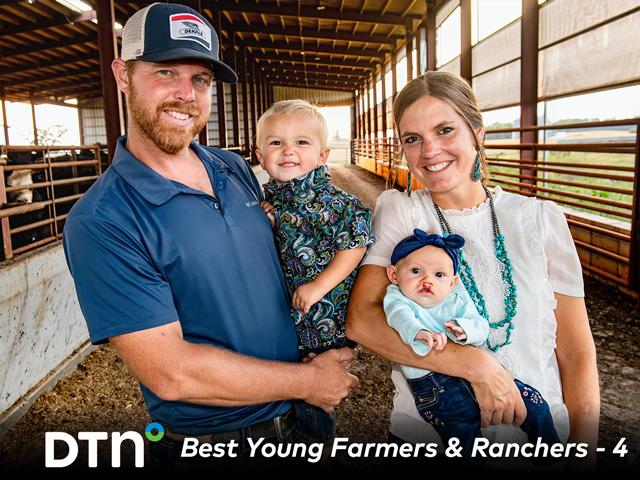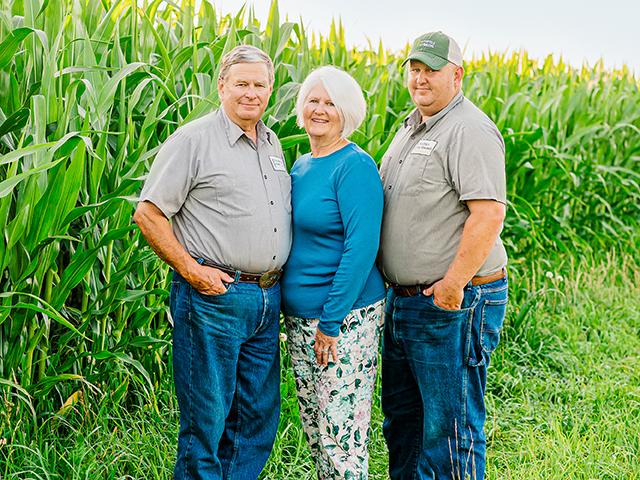Succession Strategies Part 3
Can We Talk?
Farmers and ranchers have no fear of talking about planter row widths or daily rate of gain. They'll even wade into a little controversy, discussing cover crops. But, talk about sensitive family transition topics? Most close up tighter than a vise grip. Unfortunately, that can lead to misunderstandings and conflict, which can ultimately break up a family. So, how do you get family members to talk?
"The first thing that has to happen is you need to define what you need to talk about," advises Dick Wittman, a farm business/succession consultant and retired manager of his family's dryland crop, range cattle and timber operation, in northern Idaho. Family members should explore questions without being pressured to give quick answers, he emphasizes.
It's also important, notes Lance Woodbury, principal and family business consultant with Pinion (formerly KCoe Isom), to acknowledge there are two separate conversations:
1. Ownership transition
2. Management transition
Both generations need to start asking themselves, "What are our expectations five years from now, 10 years from now?" in each of these two areas.
"I often ask each generation, 'What has to happen so you feel good about the future?'" Woodbury explains. "Sometimes, the answer is, 'We've got to grow,' or 'We've got to get our finances in order.' The important thing is are the different generations on the same page?"
OWNERSHIP TRANSITION
In the ownership transition category, topics include how the next generation will own the land. Several families Progressive Farmer has interviewed through the years have changed their plans along the way. At first, they wanted land ownership to be shared by all the heirs. Then, as more in-laws were added and on-farm heirs desired more control over their futures, plans were changed to have the heirs inherit separate land parcels, or strategies were put in place for the farming heir to buy back ownership shares of his or her off-farm siblings. "This can be a work in progress. But, it's important to get the discussion started," Woodbury advises.
MANAGEMENT TRANSITION
Management transition needs to focus on strategic business planning. "I have my clients fill out a 17-page profile of data about their farm," Wittman says. This includes detailed financial information, an organizational chart and job descriptions, how key policies are structured (compensating and working hours, etc.) and goals. The more you can share with the younger generation, the more capable and confident it will be in participating in management decisions on the farm, he adds.
P[L1] D[0x0] M[300x250] OOP[F] ADUNIT[] T[]
Not everyone needs to be involved in all conversations. But, everyone should be aware of the results of decisions made and why, Woodbury explains.
STEPS FOR A SUCCESSFUL CONVERSATION
1. To remove as much emotion from the discussion as possible, schedule a family meeting that's not in the busy season. Let people know they'll get a chance to talk if they keep it positive. Set an agenda so people know what will be discussed, Woodbury adds.
2. Neutral territory. Meeting around the kitchen table or in the family room may trigger emotional childhood memories that you may want to avoid. Your farm office may suffice, or schedule a place outside of town.
3. Use a "mediator." If it's difficult for your family to be in the same room without someone shouting, remaining silent with inner resentment or storming out of the room in a huff, you may want to consider a professional farm succession mediator to help your family work through conflict and transition the farm as amicably as possible. We'll discuss using farm succession consultants in the next article of this series.
For others, you may want to assign a family member to be the "mediator," with everyone understanding that this person will stop people from interrupting (even if it's Dad), will limit remarks when they start to get negative and will keep the discussion moving forward.
Even in the near term, open discussion is important. "Our son is very good at calmly saying, 'I think we should discuss this,'" says Roxi Thompson, who farms with her husband, Jeff, and son, Tom, in Harmony, Minnesota. "I can get pretty emotional when money is tight about deciding not to spend a dime. For example, Tom found a good deal on Calmer rolls for our corn head, 35% off the price of new ones. Did we need them? No. But, we will down the road. As I got more alarmed, Tom calmed me down saying, 'Mom. Mom, we're just having the discussion.'"
UNCERTAINTY PRODUCES ANXIETY
"People often think conflict is the worst thing in a family business. But, that's not true," Woodbury explains. "Uncertainty is [the worst thing]. Uncertainty produces anxiety, which leads to conflict."
When parents haven't decided how they'll leave the farm to their children, the next generation doesn't know how to make plans, he notes. "The on-farm child gets to be 50 years old and says, 'If I had known that, I would have made different plans.' Uncertainty is a foundational issue," Woodbury emphasizes.
"So much goes unwritten or unsaid or assumed. Parents are concerned about conflict, so they don't want to talk about it. Or, they are resentful because they didn't know what they would get from their parents until they inherited when they were in their 60s," he explains. But it does a disservice to the 30- and 40-year-olds who need to plan for their business and their families.
KEEP TALKING
"You don't need to have all the answers," Woodbury continues. This is a work in process. Families change, farm operations change, estate laws change, goals change.
Minnesota farmer Thompson admits it's hard to schedule family meetings to talk about long-range plans. "For a while, we were diligent about weekly meetings and having planning meetings every three months with an agenda. I led the charge back when Tom returned to the farm full-time. 'What are our strengths and weaknesses? What are our goals?' I knew we needed to take time away from the farm. I wanted a full day; I got four hours. We need to do that again."
She recognizes that you can make a plan, but you know it's going to change. Yet, it gets everyone thinking in the same direction.
Successful transition must have an alignment of expectations, ag business consultant Wittman advises. For that to happen, you need to know what everyone's expectations are. So, can we talk?
**
-- For Part 1 of this series, please go to https://www.dtnpf.com/…
-- For Part 2 of this series, please go to https://www.dtnpf.com/…
[PF_1022]
(c) Copyright 2022 DTN, LLC. All rights reserved.




